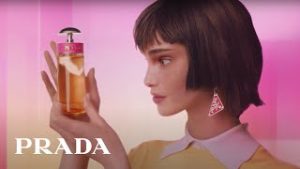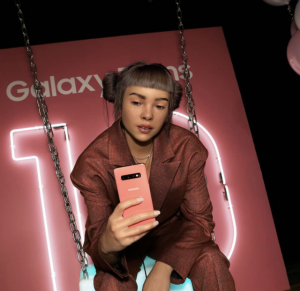
Rise of virtual influencers as brand promoters
By Akanle Temitope
The saying that the world is dynamic sounds cliché but nothing can be truer. This truism is brought home more poignantly through a cursory look at the global technological ecosystem. The pace of the changes and dynamism in this sector is mindboggling and has continued to exert a whirlpool effect on almost every aspect of life and living. One instance of such dynamism can be seen in the artificial intelligence space and its multiplier effect on life.
Artificial intelligence is used in a wide variety of places, including our homes, workplaces, and personal electronic devices, not leaving the world of advertising and marketing behind. It has birthed so many innovations one of which is virtual influencing, the ‘in-thing’ in marketing and advertising.
Virtual influencing is the use of software-created avatars -characters- which have human-like appearances, to influence people’s decisions – specifically their online behaviour and purchases- in favour of the brands they promote.
A virtual influencer, which is also known as a virtual persona or virtual model, is a fictional computer-generated character that can be utilized for a range of marketing-related tasks, but is most frequently used in place of real-life “influencers” most especially for social media marketing. The majority of virtual influencers are created with the aid of computer graphics and motion picture technology to resemble real individuals in true-to-life circumstances. These virtual people are prominent figures having, as stated here, a first-person perspective on the world, and made accessible via media platforms for the sake of influencing.
Virtual influencers have developed into a potent and cutting-edge marketing tool in recent years, with an increasing number of stylish digital characters appearing on social media platforms like Instagram and garnering sizable followings. Some of the most popular virtual influencers include, Shudu, imma, plustic boy, Lil Miquela, AI Ailynn, amongst others. These 3D models commonly appear in advertisements, brand collaborations, and PR stunts, much like celebrities and legitimate influencers.
For instance, last year, PUMA selected Maya, as the online personality to serve as the face of its Future Rider campaign throughout several Southeast Asian nations. As a highly diverse region, companies have long struggled to discover influencers capable of appealing across all markets. Maya, who is also the first digital model in Southeast Asia, was developed specifically to represent various cultures. Maya was the ideal fit for the brand, according to Puma, given how relatable, contemporary, and entertaining she is. The team of creators behind this virtual influencer added that “the emergence of virtual influencers is not an indicator that they are human replacements, but rather, a kind of escapism and imagination that offers audiences with a canvas to project their voices, hobbies, and personalities.”

Maya. Photo Credit: Google
For one of its most recent perfume commercials, luxury brand, Prada, decided against using a traditional brand ambassador or celebrity. Instead, the company introduced Candy as its own “virtual muse.” The virtual influencer oversaw a campaign in which she marketed a fragrance line while modeling several Prada pieces. The advertisement, according to a spokeswoman, offers a chance to reach new heights because when her own world malfunctions, she starts to perceive another, expanding her existence through the power of technology.” Since she is no longer constrained, her curiosity increases, new creative views are revealed, and an opportunity to reconsider reality follows. Candy appears in numerous kinds of advertising, including a print campaign, short films, and social media sites like Twitch, Snapchat, and TikTok where she interacts with the actual perfume bottle.

Candy. Photo Credit: Google
The most well-known virtual influencer is probably Miquela Sousa, also known as Lil Miquela. Since its inception in 2016, Miquela has amassed over three million followers on Instagram and has established herself as a household figure in the fashion business by serving as the face of numerous brands, including Prada, Calvin Klein, and UGG. She was designated one of TIME Magazine’s “25 Most Influential People on the Internet” in 2018, and she made about $20 million in 2020 alone, demonstrating the extent of her fame. In addition to being a flawless model, Miquela has also put out a number of tunes on Spotify.

Miquela. Photo Credit: Google.
The list of CG influencers is continually expanding as these models’ ubiquity spreads across social media. The ease with which items can be incorporated into the lives of virtual influencers plays a significant role in their popularity. Their biography and life story are well suited to the good or service they are promoting, a feat that is significantly trick to accomplish with a real-world influencer.
With more emerging from time to time and more firms lining up to work with them on cutting-edge marketing strategies, virtual influencers are becoming a significant force in the influencer marketing sector.
In the Nigerian market, no avatars have been developed, but there are abstract characters like Uche from Bolt, Efe from Fairmoney, Ope from Kuda, and so on. However, because these characters haven’t yet been given a face, they are still regarded as abstract even if they serve similar purposes as some of the characters mentioned in previous paragraphs. Rome wasn’t built in a day and so the Nigerian advertising and marketing industry is taking baby steps to venture into the world of virtual influencing by using some of these abstract characters as building blocks. This will allow for the inclusion of virtual influencers, which will be a game changer for both the local and global scene.
In any case, the trend of virtual influencers is here to stay. They are trendy, futuristic, entertaining, relatable, and expertly suited to the target demographics they seek to engage. They’re also the best resource for helping firms expand their audience, strengthen influencer marketing, and engage customers through creative storytelling.






Comment
No comments found.